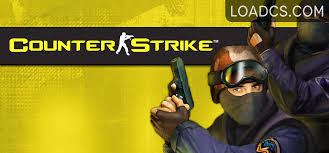
Counter-Strike (CS) is more than just a video game—it’s a phenomenon cs 1.6 download that has shaped the landscape of competitive gaming and online multiplayer culture. First released in 1999 as a mod for Half-Life, it has since grown into one of the most iconic and influential first-person shooters (FPS) in the history of gaming. Over the years, it has evolved through various iterations, each adding layers of complexity, refinement, and innovation, while maintaining its core gameplay that has captivated millions of players worldwide.
The Birth of Counter-Strike
Counter-Strike’s origins trace back to the early days of modding culture. In 1999, Minh “Gooseman” Le and Jess “Cliffe” Cliffe, two amateur developers, created a mod for the Half-Life game, which was a groundbreaking first-person shooter in its own right. Their mod was simple: a tactical shooter where players were divided into two teams—Counter-Terrorists and Terrorists—and each team had distinct objectives such as bomb planting or hostage rescue.
What set Counter-Strike apart from other shooters of the time was its focus on teamwork, strategy, and gunplay realism. Instead of relying on fast-paced, run-and-gun mechanics, the game rewarded precision, tactics, and careful resource management. Weapons were purchased before each round with in-game currency earned from previous rounds, and dying meant a player would miss the next round unless their team won. This introduced a high level of strategic depth to the game, requiring players to think carefully about every action, every move, and every shot.
The success of Counter-Strike was immediate. The mod gained massive popularity among PC gamers, and its fast-paced, tactical gameplay made it a hit with competitive players. By 2000, the game was picked up by Valve, the developers of Half-Life, and it was officially released as a standalone title. The rest, as they say, is history.
The Rise of Counter-Strike 1.6
By the early 2000s, Counter-Strike had solidified itself as a staple of online multiplayer gaming. The release of Counter-Strike 1.6 in 2003 marked a critical point in its evolution. This version refined the gameplay, ironed out many bugs, and introduced an improved engine, better graphics, and more balanced maps.
1.6 became the definitive version of the game, one that would dominate the competitive scene for nearly a decade. It became a fixture at LAN (local area network) tournaments and was a regular at major esports events. It was during this time that the first wave of esports stars emerged—players who became household names within the community, known for their exceptional skills, strategies, and teamwork.
Games like ESL, WCG, and * CPL* (Cyberathlete Professional League) established Counter-Strike as one of the first esports to truly gain traction globally. The game’s competitive scene thrived, particularly in Europe and North America, while other regions, like Southeast Asia, also began developing their own scenes.
Counter-Strike: Source and the Transition to the Source Engine
As technology advanced, so did the need for a new engine. In 2004, Valve released Counter-Strike: Source (CSS), which was built on the newer Source engine, the same engine behind Half-Life 2. The shift to Source introduced significant improvements in graphics, physics, and gameplay mechanics. While the game retained the core principles that made the original Counter-Strike so beloved, Source faced challenges in winning over the loyal 1.6 player base, many of whom were hesitant to leave behind the game they had mastered.
Nevertheless, CSS introduced some notable features, such as better character models, improved audio, and a more fluid movement system. Over time, its popularity grew, but it never quite reached the same competitive height as 1.6, particularly among veteran players who found comfort in the older version’s precise mechanics. Yet, it was still an important stepping stone for the series as it modernized, and many players who were introduced to the franchise through Source would go on to embrace the more polished versions of the game in the future.
Counter-Strike: Global Offensive – A New Era of Competitive Gaming
The real game-changer came in 2012 with the release of Counter-Strike: Global Offensive (CS:GO), the version that would ultimately define the series for the modern generation. CS:GO brought together the best elements of Counter-Strike 1.6 and Counter-Strike: Source, while introducing a host of new features and updates to ensure the game stayed fresh and relevant in an increasingly competitive gaming landscape.
One of the key changes in CS:GO was the inclusion of new weapons, maps, and skins, giving players more options and customization in their playstyle. The game’s graphics were updated to a new standard, while retaining the iconic feel of the original Counter-Strike experience. The matchmaking system also played a huge role in CS:GO’s success. With the introduction of official matchmaking servers, players could easily connect to competitive games against others of similar skill levels, helping to make the game accessible to casual players while maintaining its appeal to the hardcore, competitive community.
CS:GO also became a cornerstone of the esports scene, quickly rising to prominence as one of the most popular competitive games worldwide. The introduction of the Major tournaments, supported by Valve, cemented the game’s place at the pinnacle of esports. Major tournaments like DreamHack, ESL One, and ELEAGUE offered multi-million dollar prize pools and attracted the attention of millions of fans around the world. These events transformed the game’s competitive scene into a professional sport, with legendary teams, players, and coaches emerging and competing for global dominance.
The Cultural Impact of Counter-Strike
Counter-Strike’s influence extends far beyond the game itself. The series has helped shape the broader landscape of esports and competitive gaming. Its influence can be seen in the rise of streaming platforms like Twitch, where competitive matches and casual play alike have become major spectator sports. Counter-Strike has become an integral part of the culture of online gaming, spawning countless fan communities, memes, and a vast array of fan-made content.
Beyond gaming, Counter-Strike has also become a tool for learning and development, used by professional organizations to train teams, sharpen communication, and develop strategies. The game’s impact on the FPS genre cannot be overstated—it set the bar for future games, influencing titles such as Call of Duty, Rainbow Six Siege, and Valorant, which all owe elements of their gameplay mechanics to Counter-Strike’s formula.
The Future of Counter-Strike
As of now, Counter-Strike: Global Offensive continues to be one of the most-played games in the world. While rumors of a Counter-Strike 2 have circulated, Valve has remained tight-lipped on the future of the franchise. What’s clear, however, is that Counter-Strike’s legacy is enduring. Whether through new updates, the continued growth of esports, or simply its massive player base, the game’s ability to adapt while retaining its core appeal has allowed it to thrive across generations.
In conclusion, Counter-Strike has left an indelible mark on the gaming world, becoming a cornerstone of both casual and competitive gaming. From its humble beginnings as a mod to its place as a global esports phenomenon, Counter-Strike has earned its reputation as a true gaming icon. As the franchise continues to evolve, there’s no doubt that it will remain an influential part of the gaming world for years to come.
